The 19th Century was the heyday of animal illustration. The European
exploration and colonisation of the world opened up new areas to Western
Science. Wherever Europeans went, be they explorers, diplomats, colonists or
conquerors they took with them botanists and zoologists to record what they
found. At the same time, there was a market for illustrated works depicting
wildlife from all over the world. The technology of the time meant that fine
illustrations could only be created by hand engraving plates, usually made from
porous stone, printing onto paper, and then hand colouring the print with
watercolour.
Here are some 19th century Gerbil illustrations that I have collected sorted
into chronological order. In most cases, clicking on the picture will show a
larger version.
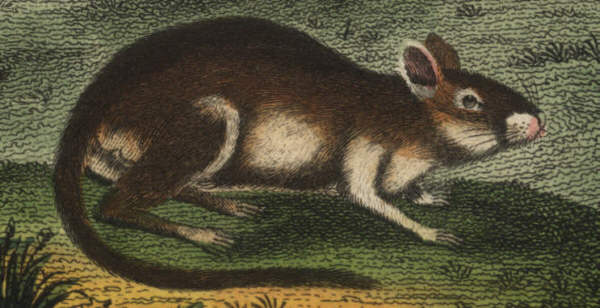
A Tamarisk Gerbil (Meriones tamariscinus)
from "A Genuine and Universal System of Natural History" by Sir
Charles Linnaeus, completed after his death by J. Frid Gmelin and published
in London in 1804. Click on it for a larger version which also shows a Dormouse,
two Jerboas, a Striped Mouse and an Economic Mouse.
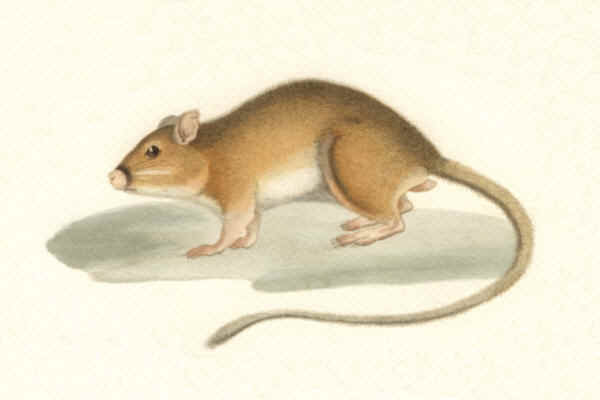
This Indian Gerbil (Tatera indica) is
from a 1837 version of Georges
Léopold Cuvier's "Le Règne Animal distribue d’Apres son
organization", originally published in Paris in 1817.
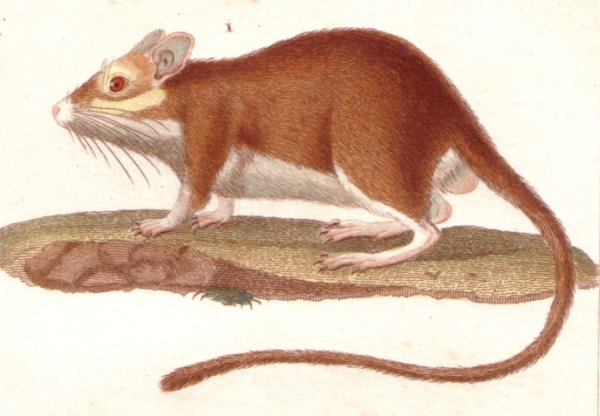
A gerbil (species unknown) from Dizionario delle scienze naturalle ... an
Italian 1937 translation of "Dictionnaire des sciences naturelles
..." by Georges-Frédéric Cuvier, younger brother of the better-known
Georges Léopold, Baron Cuvier (see above).
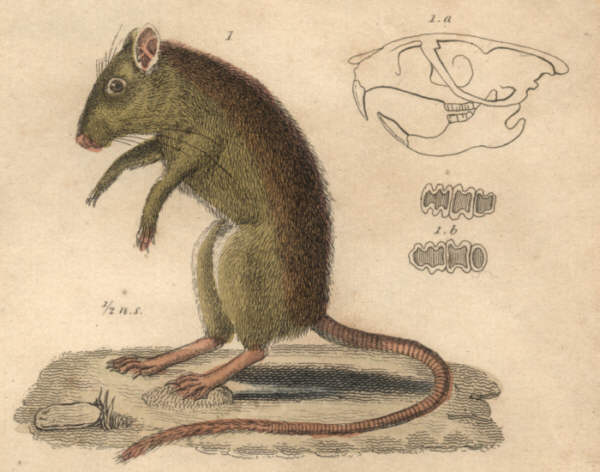
This illustration of The Greater Egyptian Gerbil
(Gerbillus pyramidum), also sometimes called The Pyramid Gerbil, comes
from an English translation of the previous work, Baron
Cuvier's "Le Règne animal distribué d'après son organisation"
. This translation was published in London in 1837 as "The Animal
Kingdom arranged according to its organisation". The picture is only
one of three on the page. Click on the above image to see the whole print, which
also includes drawings of a Common European Hamster (Cricetus cricetus),
and a Root Vole (Microtus oeconomus), although different scientific
names were used by Cuvier for these species.
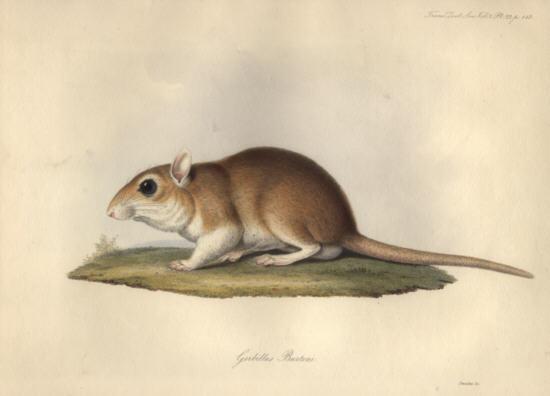
This illustration of Burton's Gerbil (Gerbillus
burtoni) is from Volume Two of "Transactions of The Zoological
Society of London" and was published in 1838 to accompany the
first description of this species.
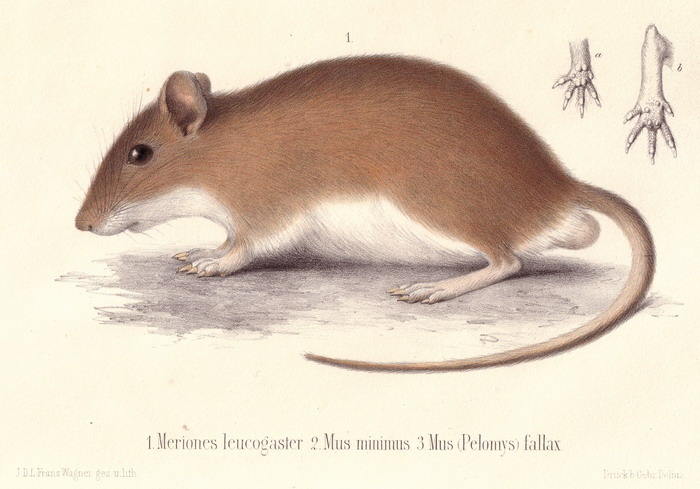
This illustration of the Bushveld Gerbil (Tatera
leucogaster) appeared in "Naturwissenschaftliche Reise Nach Mossambique
auf befel Seiner Majestat des Konigs Friedrich Wilhelm IV" by Wilhelm C. H.
Peters. It was published in Berlin in 1852 and accompanied the first description
of this species. Click on the print for a larger version that shows more the
very large page this comes from, and includes a pygmy mouse.
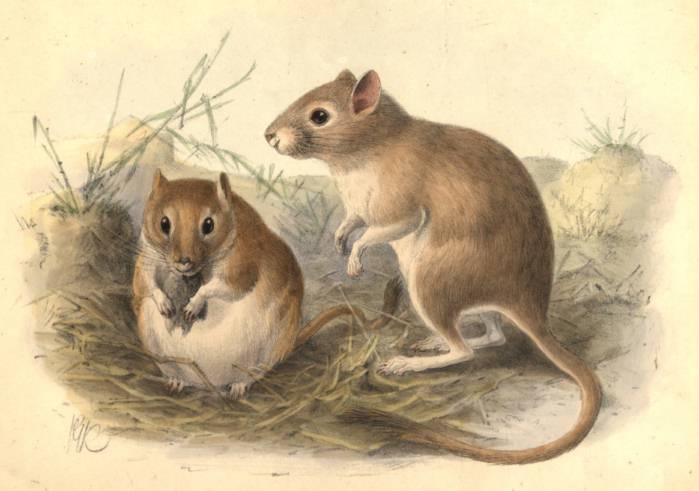
This illustration is of The Midday Gerbil (Meriones
meridianus) is by the famous bird illustrator J
G Keulemans (1842-1912) and published by the Indian Government in 1879
in "The Scientific Results of the Second Yarkand Mission: Mammalia"
by William Thomas Blanford.
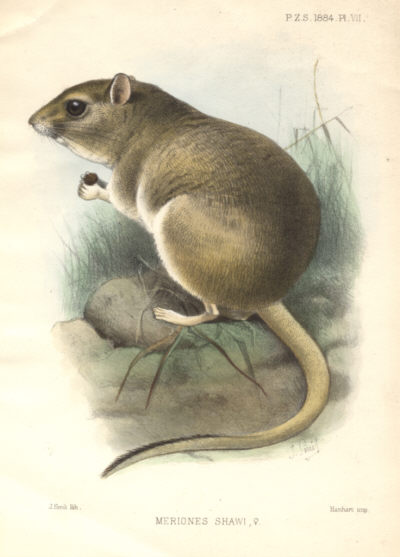
This print of a Shaw's Jird (Meriones shawi) by
J Smith appeared in The Proceedings of the Zoological Society in 1884.











Return to the NGS Homepage?
The views presented on this page are not necessarily those of the National
Gerbil Society.
Please note that the material on these webpages is covered by copyright law.
If you wish to use any pictures etc for anything other than your personal
private use, such as publishing material on a website, then
This web page may include links to other web sites. These links are provided
in order to enhance the interest and usefulness of other content and are not
intended to signify that the National Gerbil Society, or the authors of material
featured on the NGS Website, endorses or otherwise has any responsibility for
the content of any linked web page, web site or other linked material.
This page has been constructed by
Telephone number for media contact only - (+44)
07941893143

Last updated 14 September 2009








